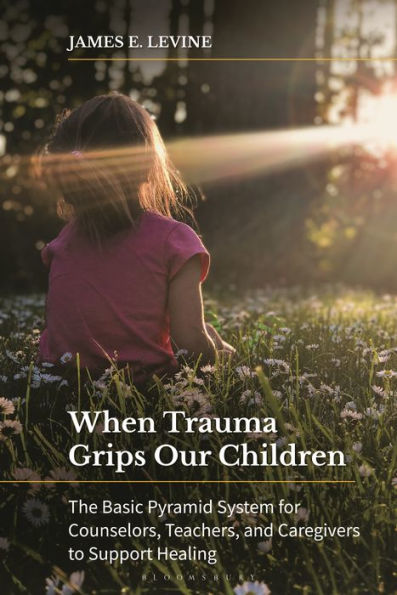
When Trauma Grips Our Children: The Basic Pyramid System for Counselors, Teachers, and Caregivers to Support Healing
160
When Trauma Grips Our Children: The Basic Pyramid System for Counselors, Teachers, and Caregivers to Support Healing
160Paperback
-
PICK UP IN STORECheck Availability at Nearby Stores
Available within 2 business hours
Related collections and offers
Overview
Trauma in children varies in how it presents-in behavior, emotions, learning, and social interactions-and how to address it depends largely on its presentation. Children may exhibit many types of behavior that could be attributed to trauma, such as telling lies and feeling shame, lacking focus or having outbursts in class, and distrusting peers and adults, among many more.
With a sensitive yet structured approach, this book teaches parents and caregivers how to support a child with severe trauma. A kaleidoscope of case studies, discussed using the new Basic Pyramid model developed by the author, helps practitioners determine appropriate intervention.

Product Details
| ISBN-13: | 9798765125892 |
|---|---|
| Publisher: | Bloomsbury Academic |
| Publication date: | 05/30/2024 |
| Pages: | 160 |
| Product dimensions: | 6.12(w) x 9.25(h) x 1.00(d) |
About the Author
Table of Contents
AcknowledgmentsIntroduction
1. Trauma and Psychological Safety a. The Adverse Childhood Experiences (ACEs) Study b. Behaviors c. Functions and Meaning of Behavior
2. Support Planning and the Basic Pyramid
3. Differences between the Basic Pyramid and Traditional Behavior Plans a. How We Can Talk with Children about the Basic Pyramid
4. The Impact of Shame
5. Shame and Lying
6. Making It Up to Others: Restitutional Practices
7. Co-Occurring Diagnoses and Children's Meaning Making
8. Psychotherapy for Children with Trauma a. Adapting Therapeutic Models to Other Settings b. Integrating These Approaches into the Basic Pyramid c. Promoting Resilience and Post-Traumatic Growth
9. Two Students a. Speaking of Esther b. Learning about Jake c. Conclusions and Final Thoughts
References
Index
What People are Saying About This
"Dr. Levine’s book will not only be a welcome tool to therapists and teachers, it will be their daily detailed guide in their difficult work of treating troubled children. Most children are troubled some of the time, or at some stages of growing up and parents will also welcome many of the offered suggestions. I especially appreciated the affection and respect that this author shows in all his treatment recommendations. We are fortunate to have such a gift from a deeply experienced clinician."
“This is a remarkable book. Counselors, teachers, and other caregivers can often struggle to make sense of behaviors that, at face value, seem so counter-intuitive. Traumatized kids can lash out when one tries to help them, sabotage relationships that appear supportive, regress into actions of a much younger child and many other reactions that seem odd to a non-traumatized person. Jim provides a plain English roadmap to allow one to navigate such difficult terrain, based on years of practical experience. I believe anyone that is working with traumatized children should read this book.”
"Dr. James Levine has demystified understanding and responding to children struggling with trauma for anyone working to help. When Trauma Grips Our Children uses relatable real-world examples from Dr. Levine's decades of experience to transform clinical terminology into easily understandable language for the rest of us. Dr. Levine offers insight into why our common, and well-intentioned, approaches to help children often fall short. While the arrival of this book could not be timelier, I am confident that it will long serve as a staple resource for school practitioners in our increasingly traumatic world. This book should be required reading for every aspiring and veteran classroom teacher, paraprofessional, special education provider, counselor, and school administrator, as well as any parents hoping to reach a child gripped in the psychological aftermath of trauma."
“When Trauma Grips Our Children is an excellent book that educators, therapists, parents, and anybody working with children who struggle should read. By thoughtfully analyzing the root causes of the behavior of children who have suffered from all sorts of trauma, Dr. Levine provides practical and effective ways to support the many kids who have suffered and minimize further trauma. I particularly appreciated how readable this was for someone like me who is not an educator or a therapist. In addition, the book’s many stories about children that the author has worked with and acknowledgement of what he learned from his patients adds to the tremendous value and readability of the book.”
"Anyone – teachers, counselors, other caregivers – faced with children’s or adolescents’ complicated, challenging behaviors should read this book. And if you find yourself uncomfortable with interventions that feel too punishing and lacking empathy or are frustrated with so-called tried-and-true methods that are ultimately ineffective, you should keep this book near and refer to it often. Having so many years of clinical experience with children - with trauma histories, autism spectrum disorders, intellectual disabilities, and virtually every other behavioral health difficulty - enabled Dr. Levine to design a system of intervention that can be effective with any struggling child. This is a framework that is applicable to classrooms and many other settings. Every time I found myself thinking 'Yes, but what about…' I found the answer. In short, this is a new way to conceptualize challenging behavior that is critical for us to consider closely and thoughtfully."
